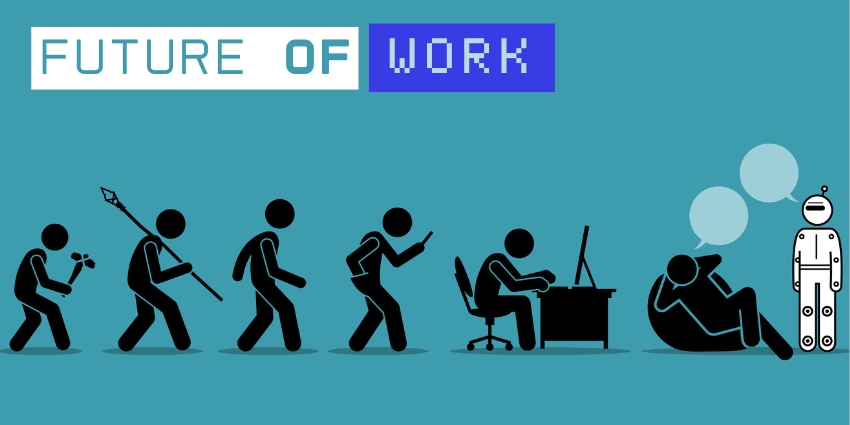As someone who’s spent years witnessing how unified communications technology transforms workplace productivity, I was fascinated by Zoom CEO Eric Yuan’s recent earnings call—not just for the quarterly results, but for how he delivered them. Yuan appeared as an avatar, becoming one of the first Fortune 500 CEOs to present financial results in this format. If you know Eric’s personality, this wasn’t just a tech demo—it was a strategic message about rethinking conventional work methods entirely.
This moment crystallizes something crucial about our evolving relationship with technology in professional environments. We’re entering what I call the “age of augmented experiences,” where artificial intelligence doesn’t replace human decision-making but enhances it in ways that drive genuine value for teams, organizations, and ultimately, employee satisfaction.
The Evolution of Human-Centric Collaboration
Think about how dramatically Zoom already shifted our communication paradigms during the pandemic. We fundamentally changed how we meet, collaborate, and maintain human connections across distributed teams. Now, with AI infused into every technology experience we create, we’re at another inflection point—but this time, the stakes are higher.
The question isn’t whether AI will transform our work lives; it’s whether we’ll maintain humans at the center of that transformation. Vendors across the unified communications landscape have a responsibility to keep humans in the loop. Otherwise, we risk automating the very creativity, empathy, and strategic thinking that makes work meaningful.
I’ve been observing a concerning trend where AI agents and automation technologies increasingly push humans out of the picture entirely. This isn’t progress—it’s a fundamental misunderstanding of what makes collaboration tools truly effective. The most powerful UC and collaboration platforms don’t replace human judgment; they amplify human capabilities.
Remember Who’s the Pilot
Here’s the framework I believe every business leader should adopt: AI is your co-pilot, not your pilot. You remain the decision-maker, the strategist, the one ultimately responsible for outcomes. Technology should layer seamlessly into your personal and professional workflows, enhancing your ability to deliver value without overshadowing your human expertise.
This philosophy recently sparked an interesting exchange on LinkedIn. Someone questioned whether I’d used AI to write an article because it was formatted in American English. (For context, I typically write in American English since roughly 50% of UC Today’s audience is from the Americas, and many international readers prefer this format.) The article was indeed augmented with AI, but here’s what struck me about their response—they focused on the tool rather than the value.
Why not ask instead: “Did this content deliver the insights you were looking for?” Because that’s the real measure of successful AI augmentation. If artificial intelligence helps us create more valuable content, streamline complex workflows, or enhance team productivity, isn’t that exactly what we want from collaboration technology?
Smart Busy vs. Just Busy
We’ve all heard the standard response when asking colleagues how they’re doing: “Busy.” But are we smart busy or just busy? There’s a crucial difference, especially in hybrid work environments where efficiency and employee experience directly impact organizational success.
Being smart busy means strategically augmenting your workflows with AI to output greater value for everyone around you. It means using unified communications tools not just to connect with colleagues, but to enhance the depth and quality of those connections. It means leveraging intelligent features in platforms like Microsoft Teams, Zoom, or Cisco Webex to focus on high-impact activities rather than administrative tasks.
For IT leaders and employee experience champions, this distinction is critical. When you implement UC solutions that intelligently automate routine processes—scheduling, note-taking, follow-up actions—your teams gain time for strategic thinking, creative problem-solving, and meaningful collaboration.
The Augmentation Advantage
The organizations thriving in today’s hybrid work landscape understand that AI augmentation isn’t about replacing human capabilities—it’s about amplifying them. Whether you’re writing marketing messages, crafting comprehensive project updates, or synthesizing complex meeting notes, AI can enhance your output while you maintain creative control and strategic oversight.
I’m reminded of watching “Limitless” with Bradley Cooper, where his character takes a pill that unlocks superhuman cognitive abilities—suddenly he can process information faster, see patterns more clearly, and accomplish in hours what used to take days. That’s the promise of AI augmentation in the workplace: not changing who we are as professionals, but amplifying our natural capabilities to work at levels we never thought possible. The difference is, unlike in the movie, we don’t need a fictional drug—we just need to embrace intelligent collaboration tools as our cognitive enhancers.
Consider how modern collaboration platforms are evolving. Features like real-time transcription, intelligent meeting summaries, and predictive scheduling don’t replace human judgment—they free us to focus on higher-value activities. The employee experience improves because people spend less time on administrative overhead and more time on work that genuinely engages them.
Embracing Productive Augmentation
To the skeptics who worry about AI integration in workplace tools, I say this:
judge the outcomes, not the methods.
If someone becomes more productive, delivers greater value, and contributes more meaningfully to their team’s success through AI augmentation, shouldn’t we celebrate that efficiency?
The unified communications industry is uniquely positioned to lead this transformation. As UC technology becomes increasingly intelligent, we have the opportunity to create work environments where human creativity flourishes alongside artificial intelligence. The key is maintaining that balance—using AI to enhance human capabilities rather than replace them.
The Future of Augmented Workplaces
As we look ahead, the most successful organizations will be those that master augmented human experiences. They’ll leverage AI-powered UC tools to create more engaging, productive, and satisfying work environments. They’ll use intelligent collaboration features to reduce meeting fatigue, streamline project coordination, and enhance team connectivity.
But they’ll do all of this while keeping humans firmly in the pilot’s seat.
The future of work isn’t about choosing between human intelligence and artificial intelligence—it’s about combining them strategically to create experiences that are more productive, more meaningful, and ultimately more human than what either could achieve alone.
Are you ready to embrace AI as your ultimate workplace co-pilot? The technology is here, the platforms are evolving, and the opportunity to transform your team’s productivity and satisfaction is enormous. The only question is whether you’ll take the controls and lead this transformation, or let others define how intelligent collaboration shapes your organization’s future.







